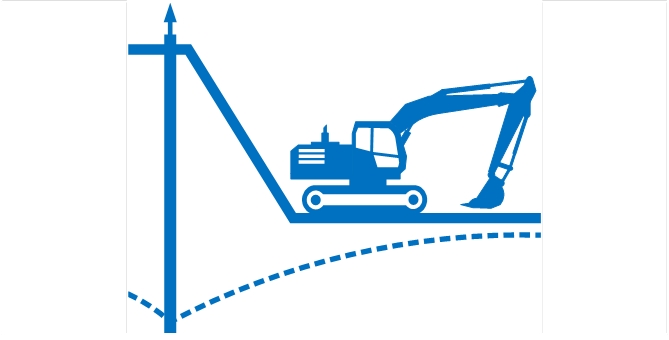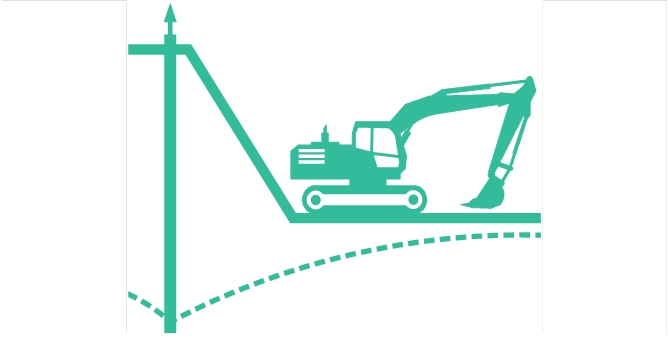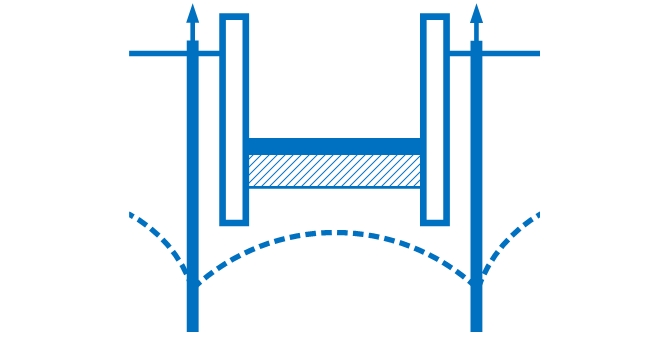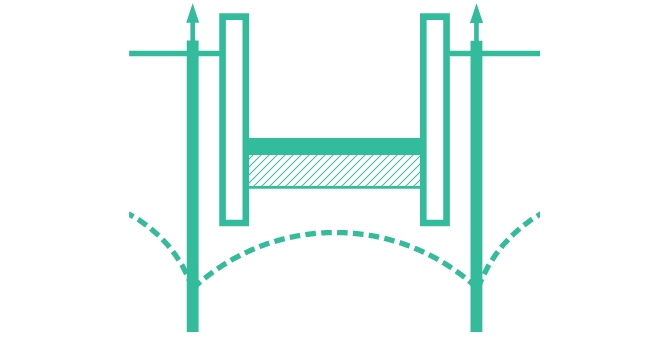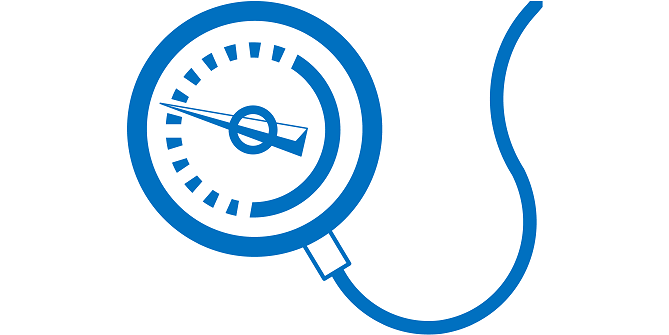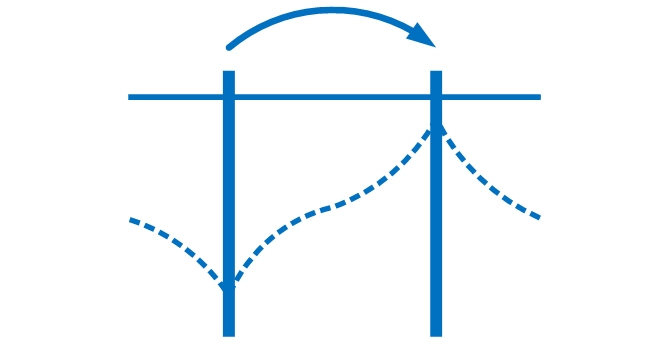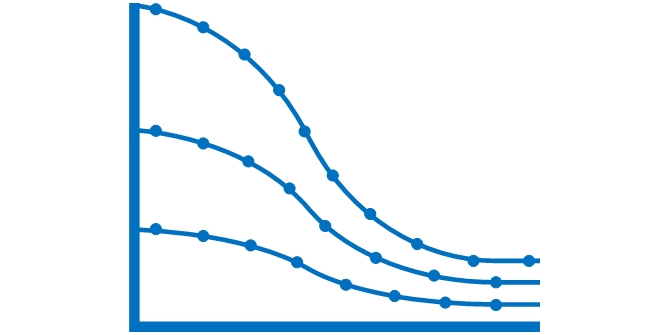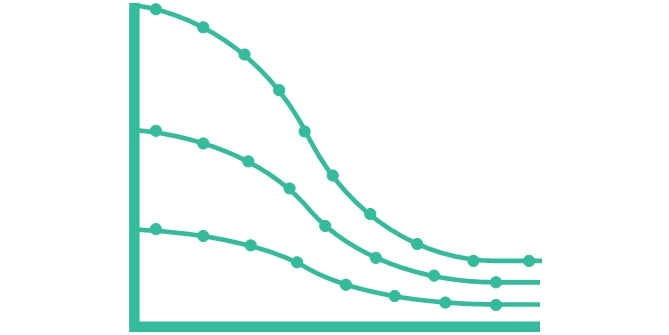GROUNDWATER CONTROL / DEWATERING SYSTEM DESIGN
The purpose of a dewatering system is to manage groundwater to enable excavation and construction to take place in safe conditions, without failure of the ground or failure of the structure being built.
The two most common methods used to control groundwater are:
Groundwater Lowering using a Dewatering System
The process of lowering groundwater levels in the area of a construction site by water abstraction.
This is also commonly referred to as construction dewatering.
Groundwater Cutoff
Exclusion of groundwater inflow into the area of construction by some form of low permeability cutoff wall or barrier e.g. sheet piling, diaphragm wall.
The techniques used are dependent upon the level to which the water table is to be lowered. We are then able to the flow volume of the water to be removed, the geology and topography at the site, the site layout and construction programme constraints.
OGI commonly use a combination of the two methods mentioned above to design groundwater control systems suitable for any construction project.
OUR GROUNDWATER CONTROL SERVICES
stabilisation of wet ground
Wet, unstable soil makes the ground to be excavated difficult to work with, and difficult and expensive to remove from site. This creates an unpleasant, sometimes dangerous working environment. The net result is usually lost time and added cost to the project.
If OGI is employed at the start of a project these issues can be planned for and avoided by designing a dewatering system tailored to the ground conditions observed on site.
OGI’s designs use the most appropriate drilling and pumping methods for the job. These may include wellpoints, borehole pumps, suction pumps, ejectors pumps or sump pumps.
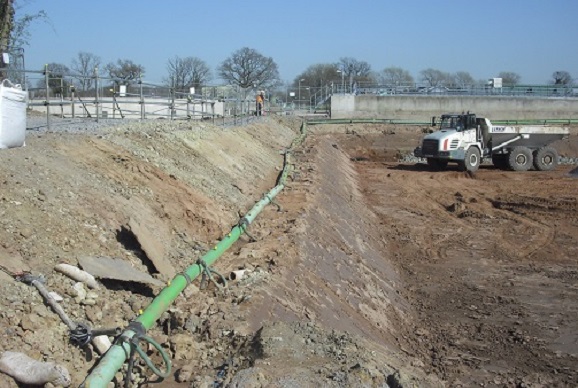
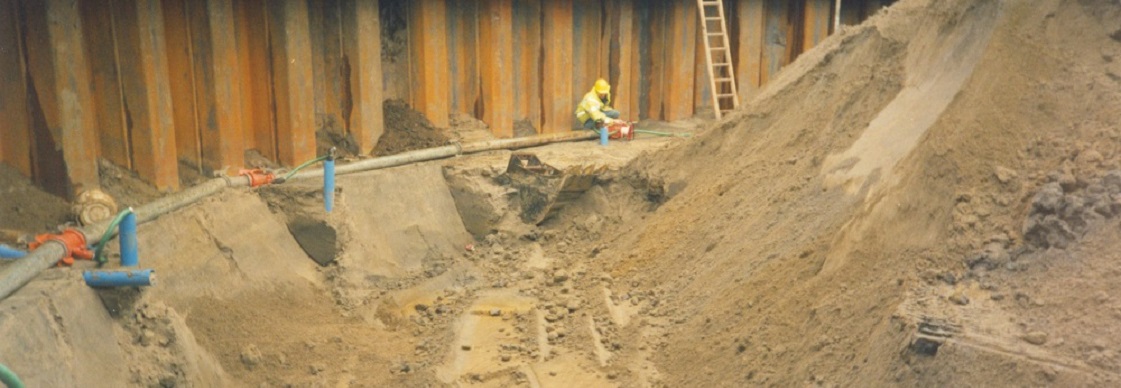
Retaining Structures and Cofferdams
On many construction projects retaining structures are used to provide support to excavations. Often cofferdams are used to cutoff groundwater from the surrounding soil.
OGI has the experience and knowledge, combined with mathematical modelling techniques, to establish the geological layers of significance and then design a suitable groundwater control system. This system will be designed to reduce the water table below the target level inside the excavation.
ARTESIAN pressure reduction
OGI can identify if a structure is at risk from artesian groundwater pressure. If required we can design a pressure relief system to safeguard against potential heave.
Artesian Pressure beneath an excavation is sometimes referred to as the silent enemy. During the construction period there can often be no apparent issue with groundwater, then with little or no warning, the base of the excavation can fail, with water flooding the structure.
It is therefore essential to establish if artesian conditions are present before any deep excavation is carried out. If artesian conditions are anticipated, then a system of either active or passive pressure relief wells can be designed and installed in order to prevent heave.
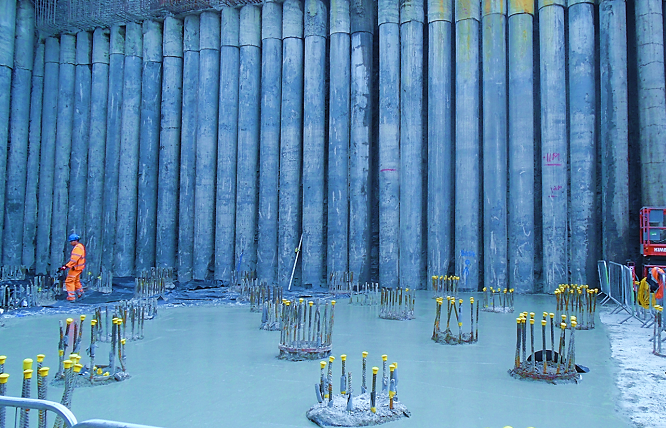
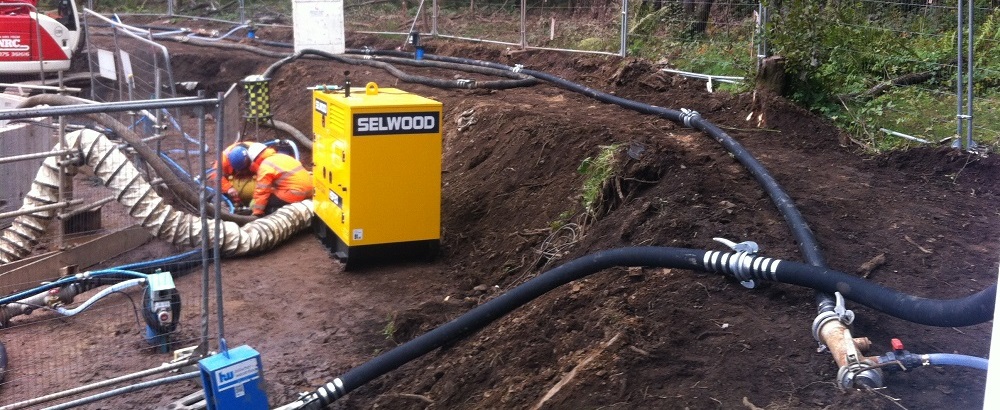
Groundwater Recirculation System
When groundwater control systems are required for excavations near sensitive structures such as railway lines, bridge foundations or buildings, the drawdown of the water table must be prevented at these structures. A reduction in the groundwater table can result in ground settlements which could lead to structural damage.
OGI can design groundwater recirculation systems which utilise recharge wells. Abstracted groundwater is recharged back into the ground between the excavation and the sensitive structure. This will prevent the drawdown of the water table beneath the structure.
Permitting and Stakeholder Negotiation
OGI has a strong relationship with the Environment Agency in England and the Scottish Environment Protection Agency in Scotland. This is because we design groundwater control systems with the environment in mind by ensuring all regulations are adhered to.
Our systems are rigorously designed with abstraction filtration media to produce silt free discharge water, tailored specifically to the geology encountered. This helps prevent ground loss and the clogging of wells and pipework. This greatly increases the likelihood of obtaining consent to discharge to the natural environment.
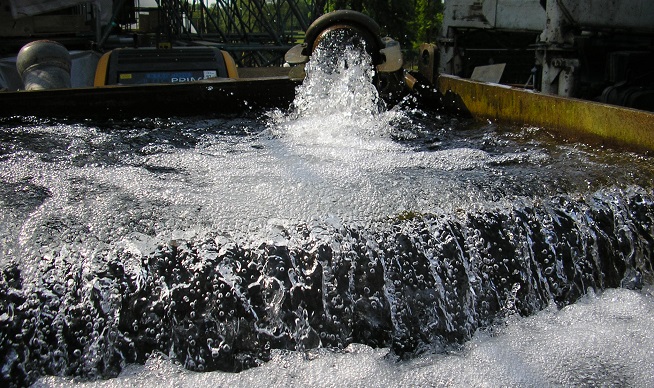
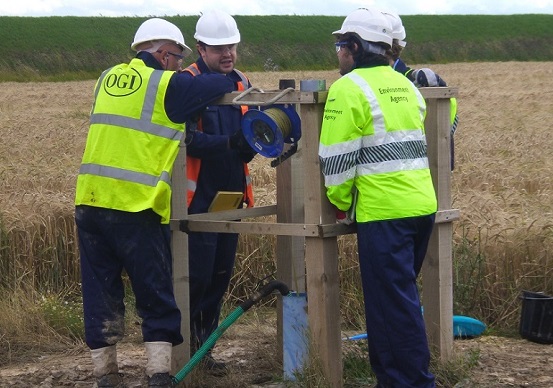
Aquifer Pumping Tests
OGI can design and analyse Pumping Tests. Pumping Tests are used to establish in-situ hydrogeological properties of the ground. Soil parameters determined from analysis of the drawdown curves are then used in the design of a groundwater control system.
Pumping Tests can save considerable sums of money by enabling the design of dewatering systems or geotechnical design to be tailored to the ground conditions at the site and to the specific construction project requirements.
Typically a Pumping Test will require the drilling and installation of two or more wells capable of being pumped from. These wells are installed with well casing and an appropriate filter pack. Water is pumped from the “pumping” well and the other well or wells are used as “observation” wells in which the groundwater drawdown is measured.
Do you require A DESIGN FOR A GROUNDWATER CONTROL system OR ADVICE ON A CHALLENGING GROUNDWATER PROBLEM?
Call us on +44(0)-191-378-7010 to discuss how OGI can assist you with your construction project requirements.




